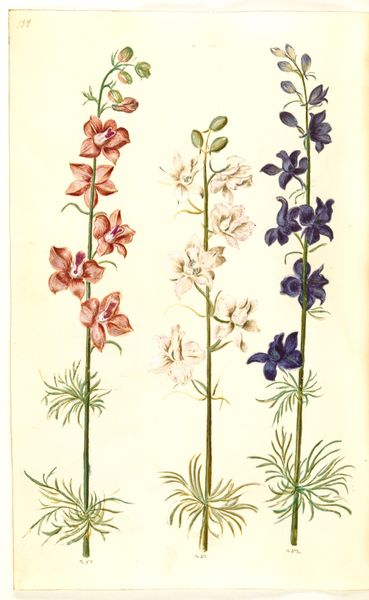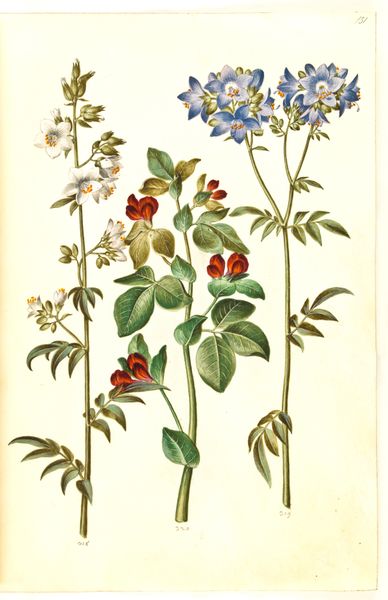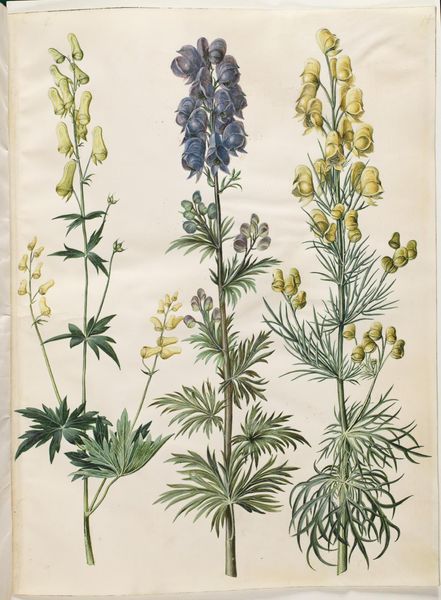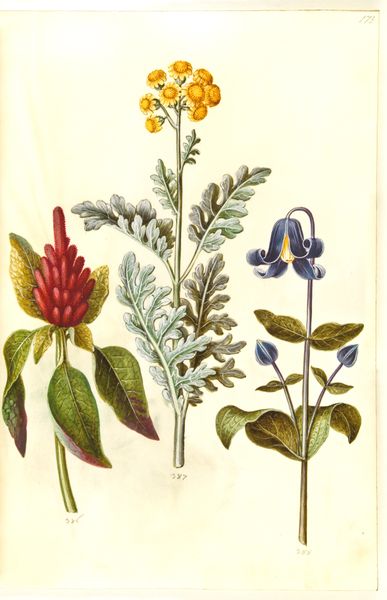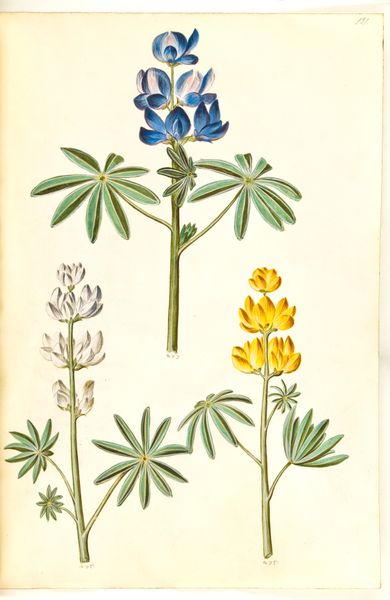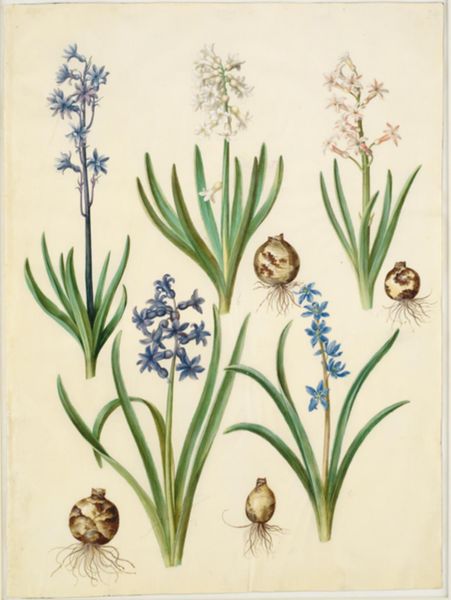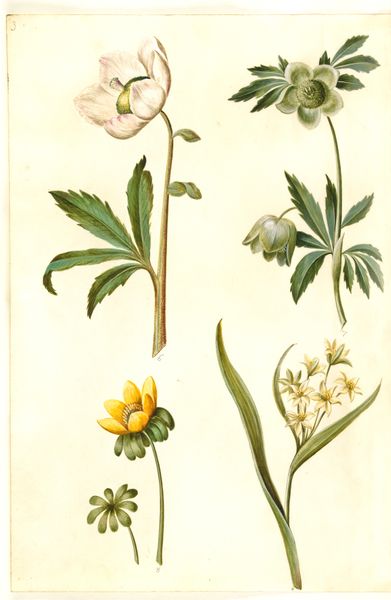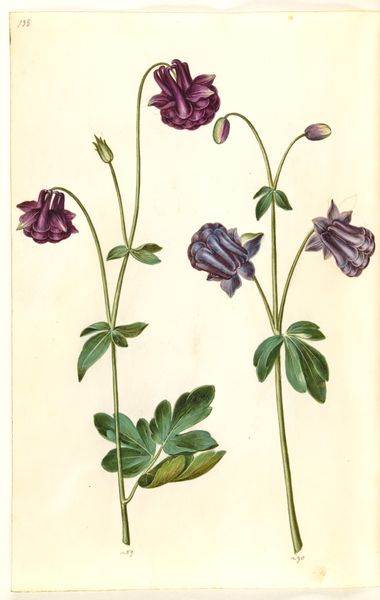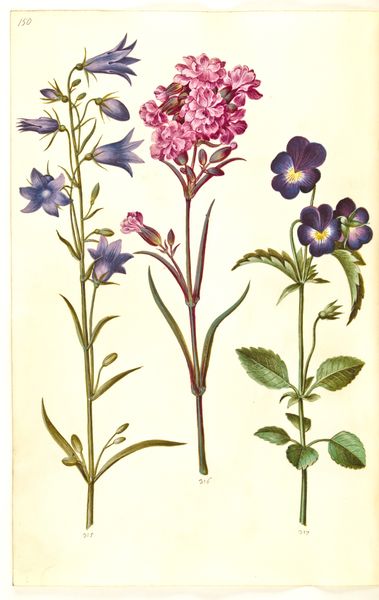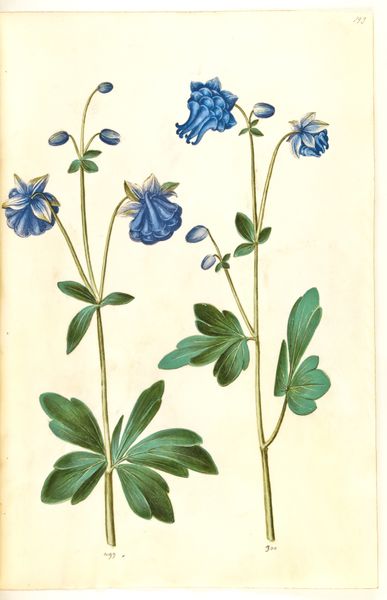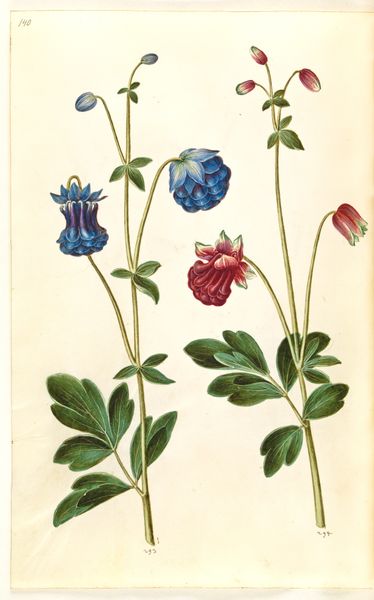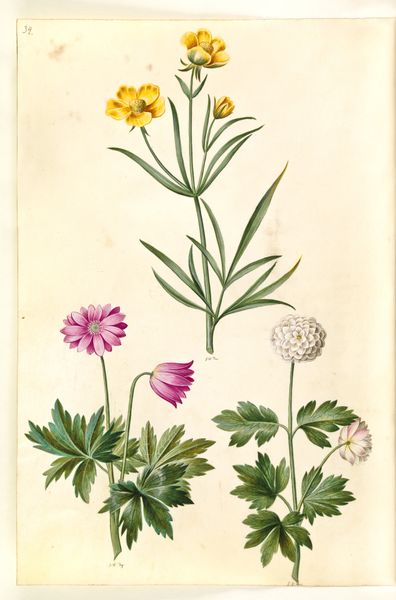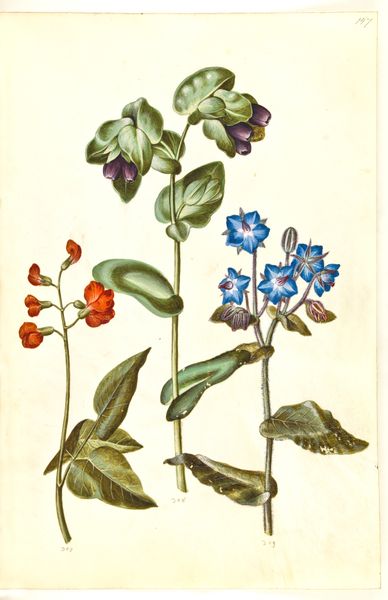
Aconitum napellus (?) (ægte stormhat); Aconitum variegatum, evt. Aconitum ×cammarum (?) (broget stormhat, evt. have-stormhat); Aconitum anthora (finbladet stormhat) 1635 - 1664
0:00
0:00
drawing, gouache
#
drawing
#
baroque
#
gouache
#
botanical drawing
#
botanical art
Dimensions: 375 mm (height) x 265 mm (width) x 85 mm (depth) (monteringsmaal), 358 mm (height) x 250 mm (width) (bladmaal)
Curator: Looking at this gouache and drawing, there’s a captivating sense of fragility. The blooms droop slightly; what's your take on this piece? Editor: This botanical study by Hans Simon Holtzbecker, dating from 1635 to 1664, captures three types of aconitum—a rather intriguing choice, considering the plant's historical association with poison. I mean, it practically screams power dynamics, doesn’t it? Think about its potential usage within systems of medicine, gendered hierarchies around healing, and so forth. Curator: Fascinating! And considered purely through a formal lens, the botanical drawing's precision in capturing minute details is quite striking, even beautiful. Observe how light reflects on the waxy leaves of the aconitum. I would call this art style Baroque, certainly. The contrasting palette—dark blues, yellows, and the cool greens— creates such a harmonious visual rhythm. Editor: Agreed. The stark contrast definitely draws the eye. And the flowers themselves? Shaped like monks' hoods, these plants could function as symbols within religious power structures of that time. Consider the socioeconomic status of patrons, and their access to this kind of expensive artistic practice of documentation through drawings of this era. I think that really recontextualizes how we view the artwork's value. Curator: A compelling reading! For me, what lingers is Holtzbecker’s mastery over form and medium. It also emphasizes how something that represents great danger, in its form, is really delicate. Editor: Yes, precisely! It is the dangerous elements in nature that possess considerable cultural power when controlled in the right context. That control could belong to certain gendered bodies, or powerful economic structures. All that is concentrated into this delicate looking drawing! Curator: The level of meticulous detail definitely demands our attention; one gets sucked into admiring its form. It seems simple but it demands great skills and knowledge of technique, from the choice of colors to the subtle tonal gradations... very subtle but definitely there. Editor: Well, viewing art is not just about how to perceive beauty through its composition but to have our pre-conceived cultural awareness questioned to create deeper dialogues, in essence activating new ways of thinking that encourage the social sciences! Curator: Point taken, thank you.
Comments
No comments
Be the first to comment and join the conversation on the ultimate creative platform.
